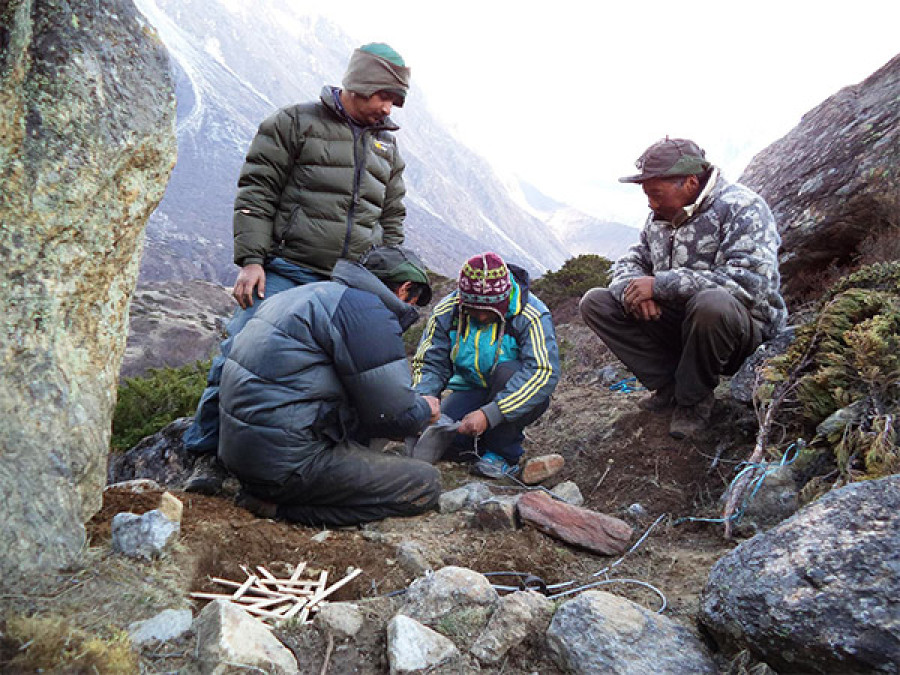National
Snow leopard study becoming difficult: Experts
The efforts to study the endangered snow leopards have become increasingly difficult as experts have been able to attach radio collar to only one of the animals in the past one and half year
Ananda Gautam
They have also been compelled to rely on past data as their efforts to fit the collar on the endangered creature from mid-November to mid-December failed to yield a positive result. The only snow leopard, which is around five years ago, was attached with the radio collar on November 20, 2014, at Khambachhen, Lelep, in the district. Various experts, including those from the Department of National Parks and Wildlife Conservation, National Nature Conservation Fund, World Wildlife Fund Nepal, International Snow Leopard Fund and other from various countries, had come to assist in setting up the trap at that time.
A team led by Kamal Thapa of WWF Nepal was deployed for the task during the second time on March. However, after finding that their claim of being able to install the collar on a new leopard was false, they are ousted from the team. Apparently, after netting the same leopard in their trap, they had removed the old one and installed a new collar on it. “The government on December 4 last year had given permission to fit the collars on four leopards. However, as it did not specify a deadline, we are preparing a work policy to give it another go in March,” said Hemraj Acharya, a warden at Annapurna Conservation Area Programme (ACAP). Acharya said they failed this year due to the delay in installing the trap.
As they have to work in an area 4,000 feet above sea level, one can work only in two seasons: mid-November to mid-December and mid-March to mid-April. While the team set up traps in Lelep twice, they also set up one at Yangma area in Olangchunggola this year. For the purpose, a 31-member team along with officials of local snow leopard sub-committee had come to the village.
The population of snow leopards in Nepal is estimated at around 300-500, and more than 11 are believed to inhabit in ACAP area. The endangered animal found only in 12 countries around the world is listed under the red list of International Union for Conservation of Nature.




 20.12°C Kathmandu
20.12°C Kathmandu















